The Peppol Framework
In Singapore today, the majority of companies (seller) issue invoices by extracting the data from their accounting/ERP systems and formatting it in human-readable form and sending it to the buyers via paper or email.
At the receiving end (buyer), manual effort is required to enter or scan the information into their systems which is a time-consuming and error-prone process.
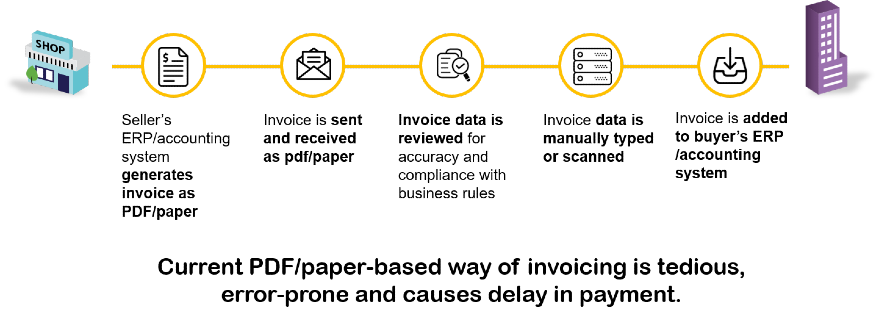
The Nationwide E-Invoicing Network adopts the Peppol framework which allows direct transmission of e-invoices from one finance system to another without human intervention, speeding up invoice processing which results in faster digital payment. This greatly reduces the time spent verifying invoices and chasing for payment.
In the Peppol network, documents are exchanged using a common XML format known as the BIS (Business Interoperability Specifications) Billing 3.0 UBL. This common standard allows users to choose their preferred accounting and ERP platforms, while being able to exchange invoices with their partners who may not be using the same platform. Documents are exchanged through Access Points, which serve as gateways into the Peppol network. Access Points take up the responsibility of mapping invoices of various formats into the standard format and send them to the receiving Access Points through the Peppol network.
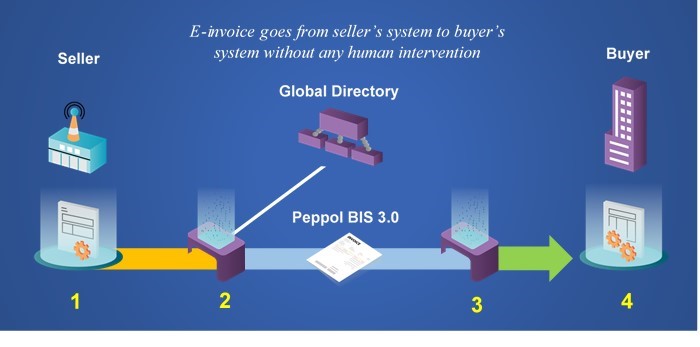
The illustration gives an overview of the 4-corner model. In a transaction, the seller’s objective is to successfully send an invoice to the accounting/ERP system of the buyer. Regardless of invoice format, documents that are sent out by the seller (corner 1) will be converted into the common standard at its Access Point (corner 2). The global directory will provide necessary information to corner 2 to identify the receiving Access Point (corner 3) for the e-invoice to be sent through the network. Upon receiving the e-invoice, corner 3 will map the e-invoice into the preferred format of the buyer (corner 4).
This network allows businesses to use the Accounting/ERP solution of their choice, connect once and connect to all. By working with E-invoicing solution providers and access point providers, the IMDA helps businesses of all sizes to realise the benefits of E-invoicing and improve their bottom line.
Cost Savings Calculator
E-invoicing over the Peppol network reduces the risks for error which can delay payments. It also reduces printing of invoices and paper usage, thereby reducing the carbon footprint and helping businesses stay green.
Cost savings can be estimated using this calculator (100.91KB).
E-invoicing Brochure


E-invoicing for Food & Retail Infographic
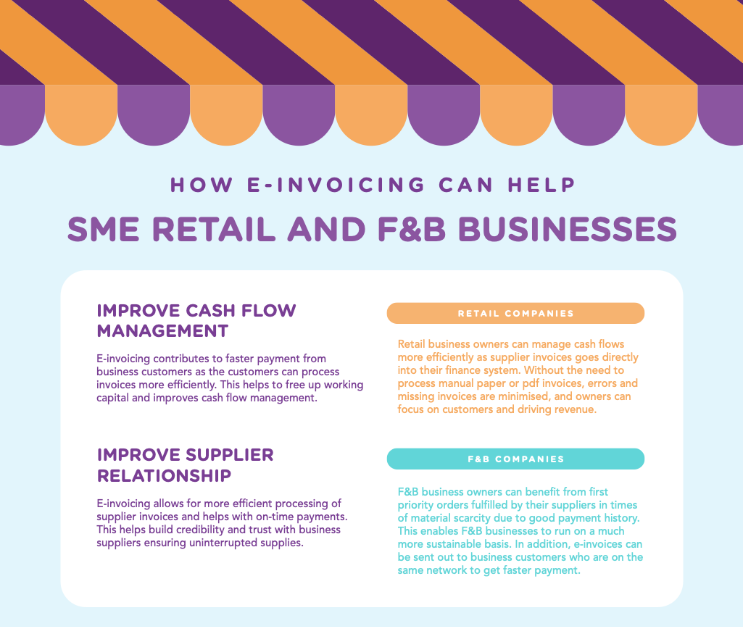

ENGAGE – Quarterly E-Invoicing Newsletter

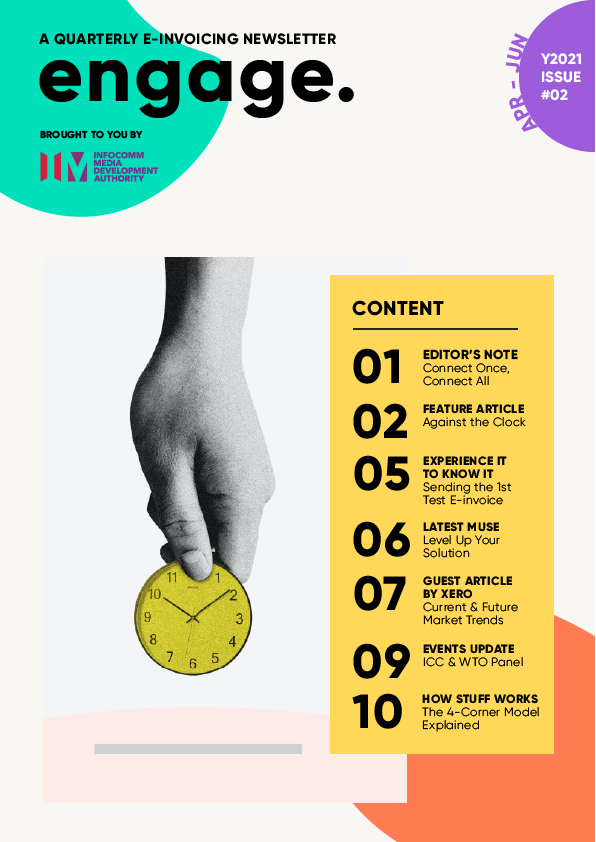
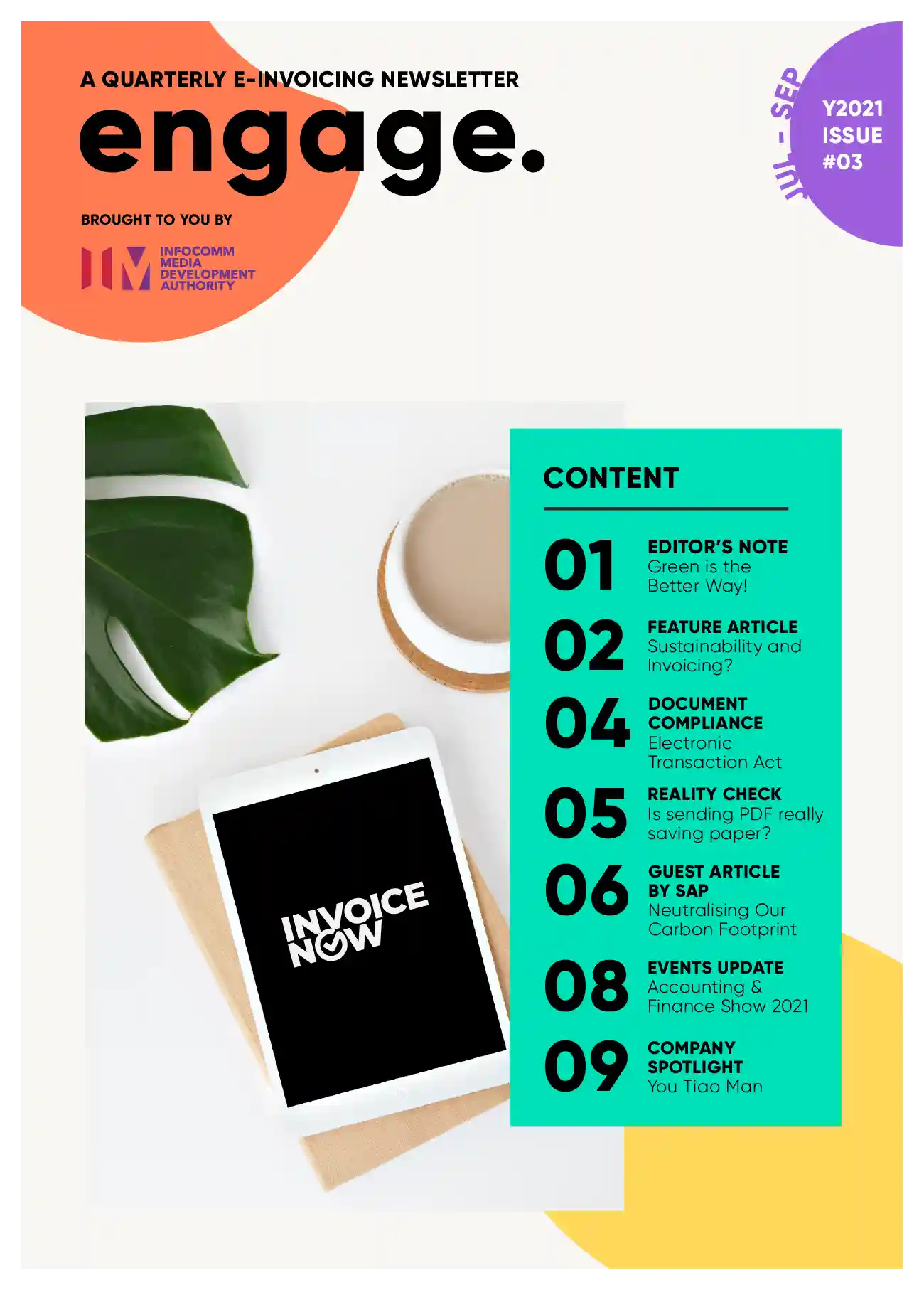
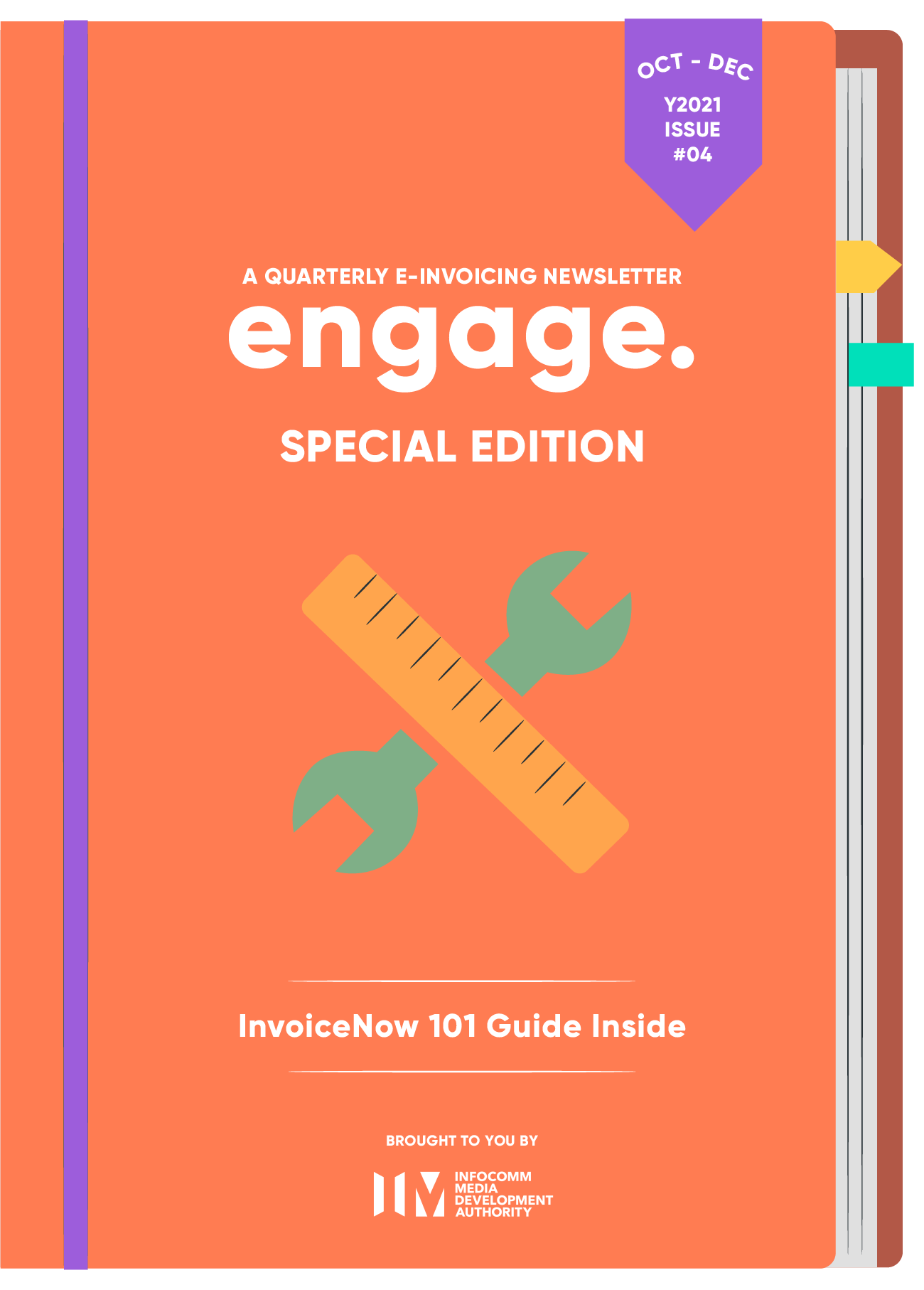





.webp)